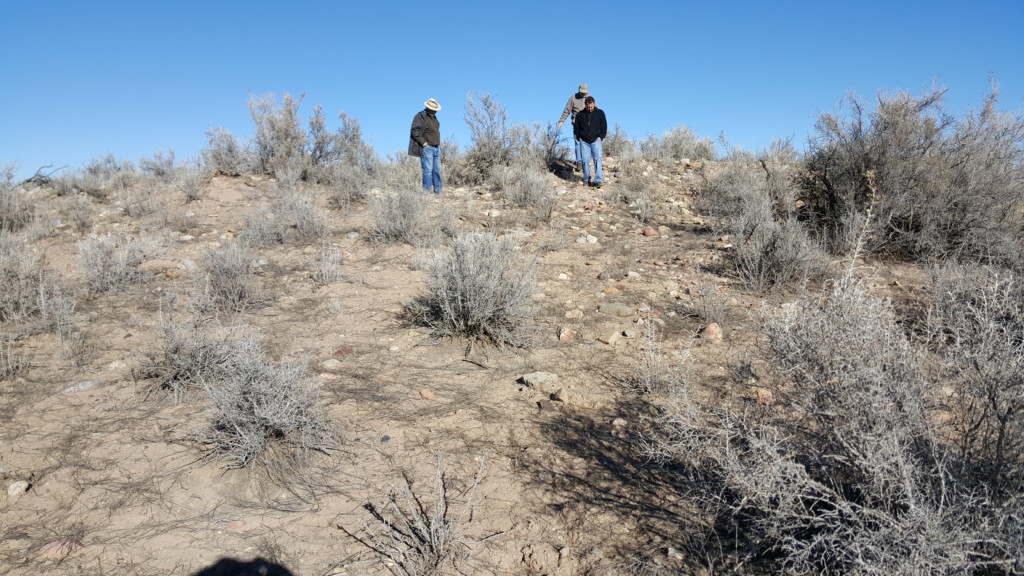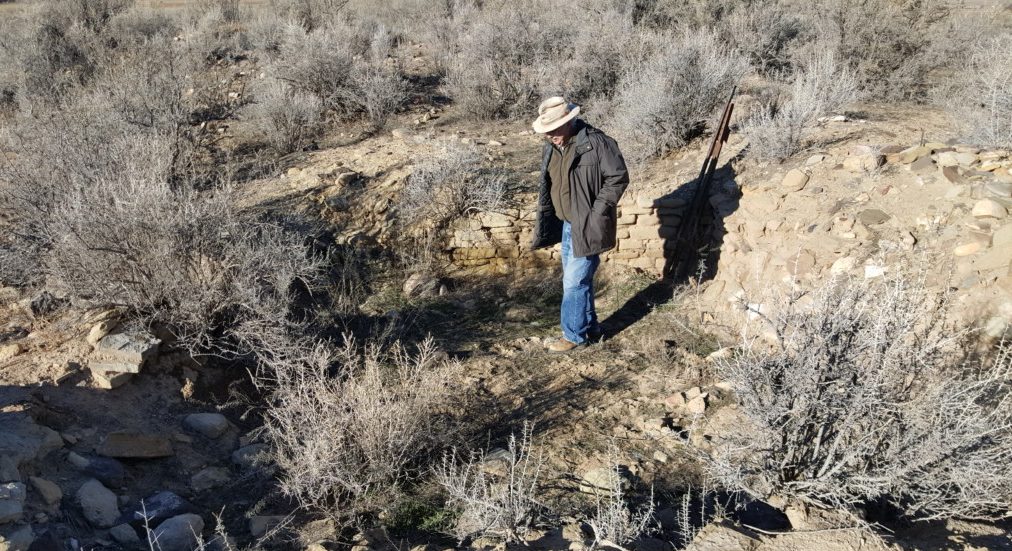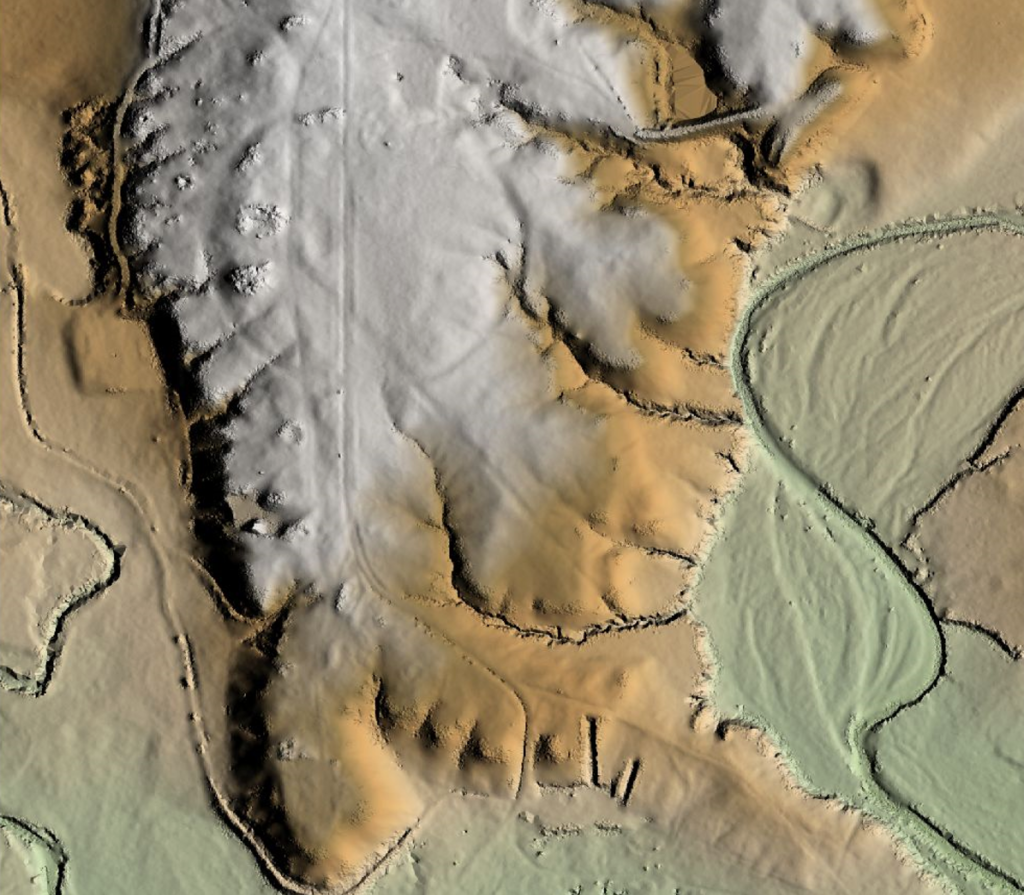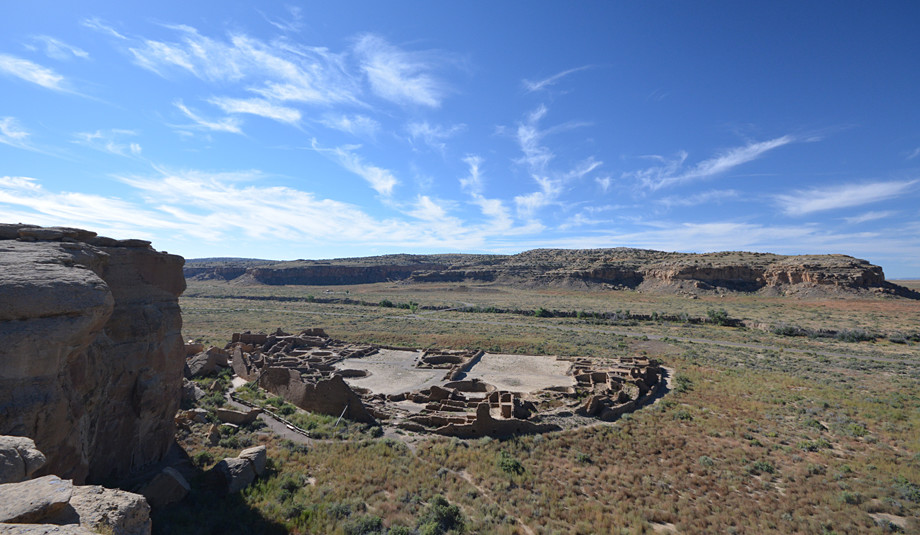The Holmes Group is an endangered Chaco outlier archaeological site in Northern New Mexico. The Archaeological Conservancy has been working since the 1980s to preserve this unique archaeological site. It was first recorded by W.H. Holmes in 1875, and again in 1935 by Deric Nusbaum, the stepson of the famous first archaeologist hired by the National Park Service. Although the site has been damaged by looting through the years, the owners thankfully did not allow mechanized looting, so damage was limited. Local archaeologists recognized the significance of the Holmes Group and were eager to protect it from further looting by working with the Archaeological Conservancy.
Unfortunately, in 1981 the original negotiations stalled between the owners and the Conservancy. Nonetheless, the acquisition of this site remained a priority for the following decades. Excitingly, in early 2016, we finally entered into an agreement to be able to purchase the Holmes Group site.
The Holmes Group is considered one of the largest and most complex of all the Chaco-period occupation sites. In 1984, archaeologists Richard Watson and Margaret Powers identified and mapped 127 surface features at the site. Rubble mounds are all that remain of a series of structures and features built from dressed sandstone and river cobbles that include two Great Houses, two Great Kivas, and two cobble masonry structures. The Chacoan Great Houses two or more stories high and made of finely trimmed and fitted stone with unusually large, often over–built rooms. The Great Kivas are 60 feet or more in diameter and remnants of Chaco style pottery is abundant across the site.
 Prehistoric roads leading to the settlement are clearly visible in LiDAR images of the site, and aerial photos show a 1,000-foot diameter artificial swale enclosing the community center. The swale is believed to have been about 30-feet wide and eight to 12 inches deep when it was first built. The purpose of Chaco roads remains a mystery, but based on their location and other features, they do not appear to have been built for transportation. The purpose of the encircling swale is also not understood.
Prehistoric roads leading to the settlement are clearly visible in LiDAR images of the site, and aerial photos show a 1,000-foot diameter artificial swale enclosing the community center. The swale is believed to have been about 30-feet wide and eight to 12 inches deep when it was first built. The purpose of Chaco roads remains a mystery, but based on their location and other features, they do not appear to have been built for transportation. The purpose of the encircling swale is also not understood.
Chaco Canyon was the ceremonial and economic center of the Southwest from the mid-800s through the 1100s CE. Roads leading out of the canyon connected the administrative hub with more than 150 outliers sprinkled throughout the San Juan Basin. These sites share pottery styles, architectural features, and other characteristics of the dozen or so Great Houses located in Chaco Canyon proper. Chaco outliers are clearly linked to the central core, but just how remains a subject of heated debate among experts. Wide, straight roads emanate from many of the outliers, although they seldom connect two sites together.
The outliers date to the same period as the major ruins in Chaco Canyon, between A.D. 850 and 1130, but they often contain pre- and post- Chacoan elements. At the Holmes Group, there appears to be earlier Basketmaker and Pueblo features as well as later Mesa Verde features. While there has been extensive excavation and research in Chaco Canyon, the outliers, key elements of the Chaco phenomenon, remain largely unexplored.
The Conservancy is thrilled for the long awaited chance to save this remarkable Chaco site. Despite the early looting, the features Holmes and Nusbaum recorded are still easily identifiable, and the research potential is enormous. The Holmes Group is considered to be the “most intact” of all the major La Plata Valley Chaco period occupation sites. A wealth of information remains protected under the surface in spite of the looting. Excavations at the Puzzle House site, another Chaco outlier Conservancy preserve, show when cultural material is carefully recovered and analyzed even small sherds can yield significant information.
Artifacts from Chaco sites are highly sought after on the black market, making on-going cultural heritage destruction in this region a real very threat. Without protection, the site would continue to be in danger of being looted and irreplaceable cultural material would be destroyed. The site is also in the midst of a region of ongoing oil and gas development, and is under constant threat from new development.
Press Articles on This Project:
- Archaeology group seeks to acquire Chacoan site from the Farmington Daily Times
- How You Can Help Archaeologists Save An Endangered Ancient Pueblo Village from Forbes by Dr. Kristina Killgrove
- Seeking support for valued archaeological site from the Ruidoso Times






